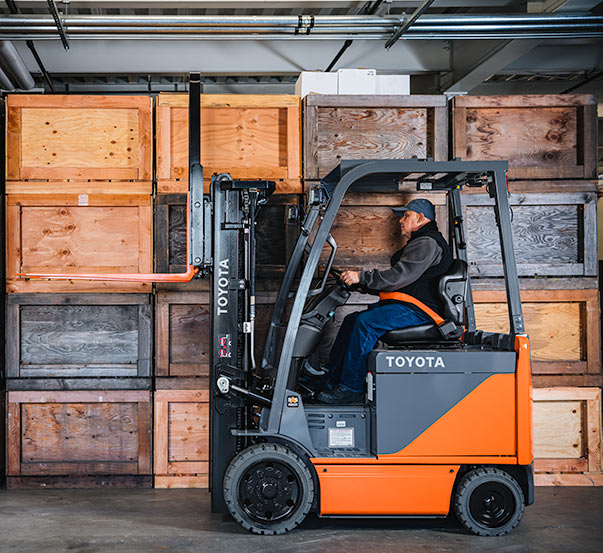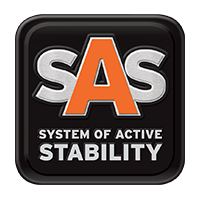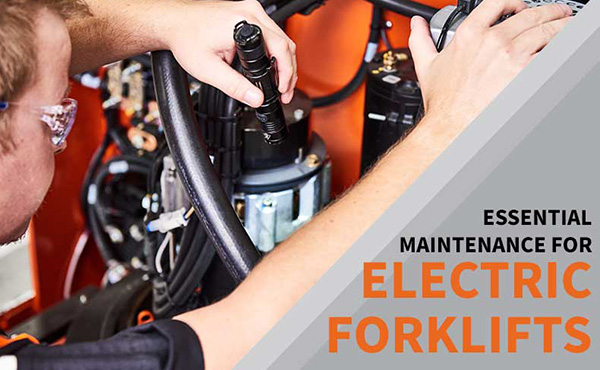You need a forklift, but when looking at the options you are not sure which one to choose for your warehouse. Is there really much of a difference? A forklift is a forklift at the end of the day, right? While there are similarities, there are plenty of differences between 3-wheel vs 4-wheel forklifts that will play a role in your operation’s efficiencies. Let’s explore the differences between our two main options: the 3-Wheel Electric Forklift (8FBE15U) and the 4-Wheel Electric Forklift (8FBCU20).
Maneuverability
For operations that require easier maneuverability and a tighter turn radius, a 3-Wheel Electric Forklift may be the best solution. With a 4′ 10″ outside turn radius, the 3-Wheel Electric Forklift can take sharper turns than standard 4-Wheel Electric Forklifts. Comparatively, our 4-Wheel Electric Forklift has a 5′ 5″ outside turn radius, needing more area to navigate.
The 3-Wheel Electric Forklift features a shorter length to fork face of 6 feet, while the 4-Wheel Electric Forklift measures at 7.5 feet. This is important in tight spaces where you don’t want your counterweight to collide with your racking or other objects.
Need to travel long distances between workstations? Our 4-Wheel Electric Forklift can travel up to 11.5 mph with a full load, allowing for faster transport compared to the 3-Wheel Electric Forklift’s max speed of 9.9 mph.
The Winner: 3-Wheel Electric

Lifting
If max lifting capacity and lifting at higher elevations are crucial to your operation, a 4-Wheel Electric Forklift is likely going to be your product of choice. The standard (8FBCU20) 4-Wheel Electric Forklift has a 4,000 lbs. lift capacity and has a max lift height of 11 feet. Meanwhile, the (8FBE15U) 3-Wheel Electric Forklift’s lift capacity is 3,000 lbs. and can lift up to 9′ 11″. It is important to note that your forklift’s lifting capacity slowly derates the higher the load is lifted.
The lifting speeds on our 3-Wheel Electric Forklift are 94 fpm with a full load, slightly outpacing our 4-Wheel Electric Forklift’s 89 fpm lifting capabilities. The lowering speeds on both products are similarly paced. The 3-Wheel Forklift lowers at 104 fpm with a full load and the 4-Wheel Forklift to lower at 98 fpm fully loaded.
The Winner: 4-Wheel Electric

Safety
Both the 3-Wheel and 4-Wheel Electric Forklift are built with safety of the operator in mind first and foremost. Each product includes the proprietary System of Active Stability (SAS). This system engages various safety features when potentially unsafe conditions are detected. One of these features is a Swing lock cylinder which counteracts a moving center of gravity as sharp turns are made. Additionally, Active Mast Control is another feature that keeps operators safe by automatically stabilizing loads handled at high lift heights.
The Winner: Tie

In the end, there isn’t a clear winner between 3-wheel vs 4-wheel forklifts for all warehouses. It comes down to your operation’s unique priorities. For tighter spaces and lower load capacities, the 3-Wheel is the clear winner. For more spread-out operations with higher load capacities, the 4-Wheel Electric is the best option.
Reach out to a Toyota Lift Northwest industry expert for a professional recommendation or request a quote! Learn more about all of our equipment here today!


